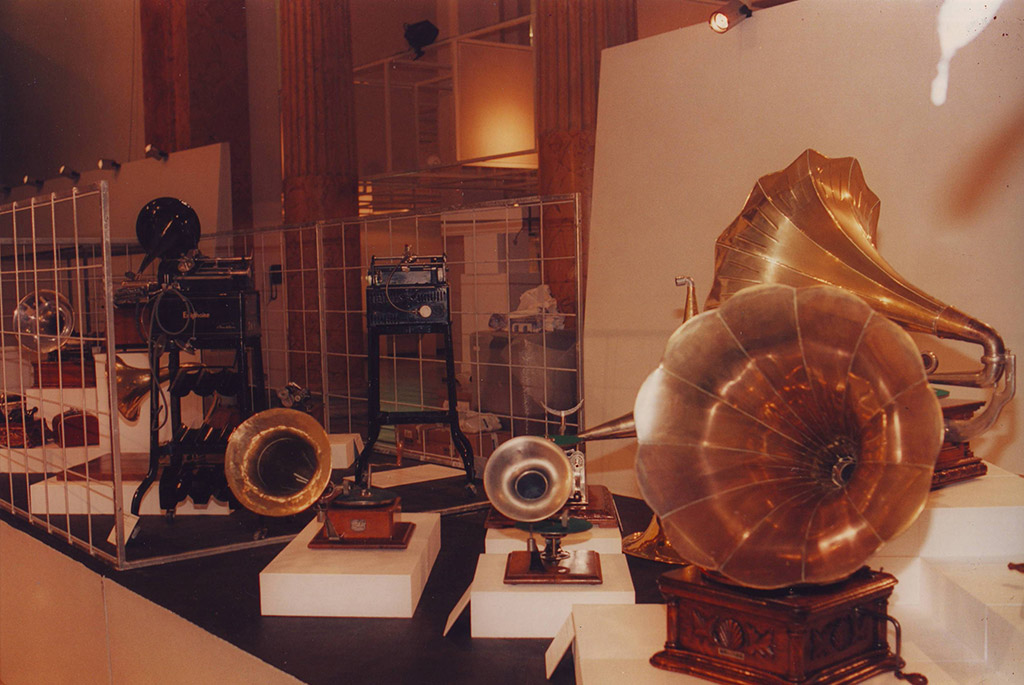
-
Genre Mostra posta sotto l’alto patronato del Presidente della Repubblica Location Palazzo delle Esposizioni di Roma Comitato Promotore Gino Landi, Renzo Arbore, Luigi Magni, Carlo Bixio Year 1996 – 1997 
Synopsis
“The giant piano keyboard unrolls like a tongue at the entrance to the gallery leading to the heart of the festival – over the head of visitors, [like] octave after octave, images are shown of the 46th Festival di Sanremo with its singers and special guests.”This ‘Sanremo keyboard’ is an ideal and unique guide around the exhibition called ‘Tu, Musica Divina’ – an exhibition about a hundred years of Italian songs and history, at Rome’s Palazzo delle Esposizioni held from 19 December 1996 to 17 March 1997. Conceived by TV, film and theatre celebrities: Renzo Arbore, Carlo Bixio, Gino Landi and Luigi Magni and organised by Rome City Cultural Department, it gave all visitors absolute freedom to view the exhibition as they wished. The main aim was to ‘show the music’ and its evolution in relation to Italian history of the last hundred years: from the sciantose – Italianised spelling of ‘chanteuse’ – dei cafè chantant ‘ of the early 1920s to the advent of radio, from the cooperation of the 1930s between film and music, to also exploring the difficult war years with songs from the peasant and worker struggles, to music associated with student protests. Architect Maurizio Di Puolo’s design allowed visitors to just wander through an imaginary city with the possibility of further exploring whatever music interested them most, from what they heard through the walls of buildings. Bringing the project to light was particularly difficult and complicated. The then Cultural Secretary for Rome City Council and song historian Gianni Borgna worked together with producer Carlo Bixio for at least two years. The organisers were faced with an interminable load of material, with over a million songs to begin with. The exhibition highlighted two thousand songs with a thousand photographs selected by Franco Lefèvre, who also curated the catalogue (with Giancarlo Governi and Claudia Terenzi), published by Umberto Allemandi. In his exhibition presentation Arbore underlined the abundance of artistry of the so-called “canzonetta” (Italian popular songs) and how certain songs in fact could be considered also ‘noble compositions’ like: ‘Violino tzigano’ , ‘La strada nel bosco’ and lastly, ‘Mamma’ one of the best known Italian songs around the world written by the duo Bixio-Cherubini, which consecrated them fathers of this genre.

 Italiano
Italiano










